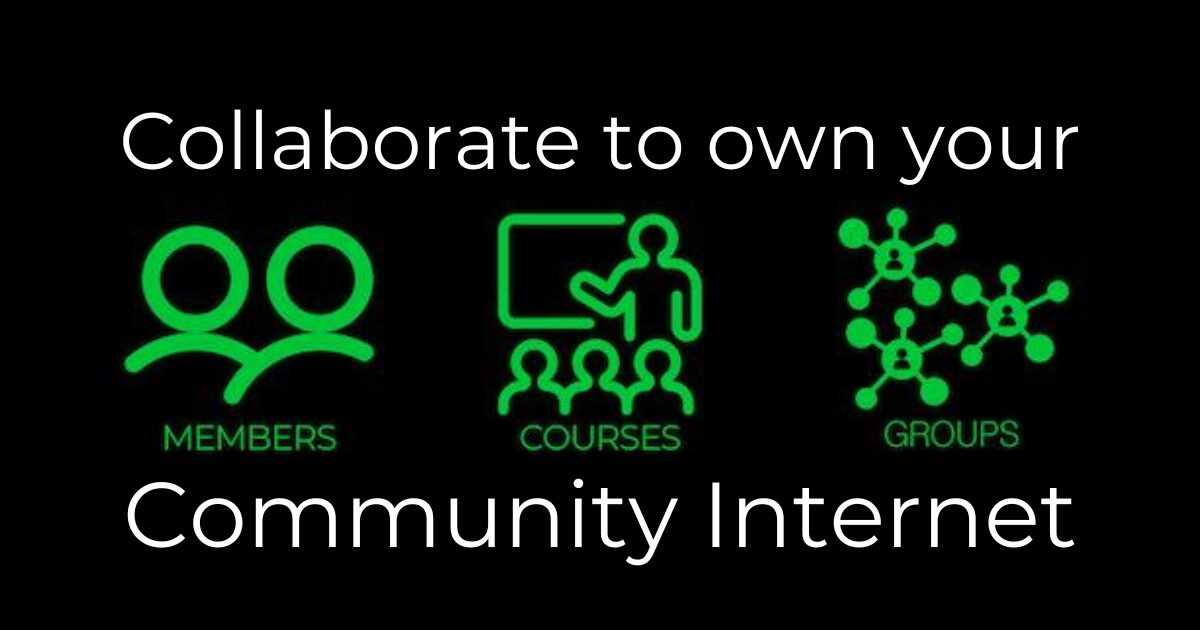
Marketplace Planning
Discuss how we Imagine, Design, Build a P2P Member Owned Marketplace for Open Access products and services: READ ME
What steps can we take to begin our P2P marketplace?
-
What steps can we take to begin our P2P marketplace?
Creating a peer-to-peer (P2P) marketplace for Open Access products and services, particularly for community-based telecommunications or broadband networks, is an ambitious project but achievable with careful planning. Here is a step-by-step guide on how a community member could imagine, design, and build such a marketplace:
1. Imagine (Vision and Planning)
- Define the Purpose and Scope:
Start by defining what the marketplace aims to achieve. For example, is the marketplace for exchanging broadband services, equipment, or even selling digital services like cloud computing? Consider models like the Althea Network that decentralize internet service provision through a blockchain-based marketplace. - Community Input:
Engage the community to understand their needs, capacities, and willingness to participate. Use surveys or community meetings to identify key products and services, and potential users. - Identify Stakeholders:
Identify all stakeholders—local businesses, ISPs, consumers, and technology partners—that will participate in and benefit from the marketplace. Create partnerships with local service providers or cooperatives. - Funding and Economic Impact:
Research potential funding sources such as grants, government programs (like the BEAD program), or crowd-funded models to support the development of the platform.
2. Design (Technology and Structure)
- Choose a P2P Model:
Decide on the operational model for the marketplace. For example, Althea uses a mesh network to allow users to exchange bandwidth and payments directly using cryptocurrency. Other models might allow for traditional payments and more structured transactions. - Blockchain for Transactions:
If decentralization and transparency are important, integrating blockchain technology can facilitate trustless, secure payments between users. Smart contracts can automate transactions and enforce marketplace rules. - User Experience and Platform:
Develop a user-friendly platform that can facilitate the exchange of services. This could be through a website or an app. Consider integrating simple user interfaces for non-technical users and adding features like rating systems for trust-building. - Governance and Compliance:
Establish the governance framework for how decisions will be made within the marketplace. This could be decentralized, like a DAO (Decentralized Autonomous Organization), or managed by a community cooperative. Ensure the platform complies with local laws, including data privacy and digital rights management.
3. Build (Implementation)
- Develop the Platform:
Start building the technical infrastructure for the marketplace. This could involve open-source technologies, custom development, or platforms like OpenCollective that support P2P ecosystems. - Partnerships and Infrastructure:
Leverage existing community broadband infrastructure if available, or work with local utilities and cooperatives to set up Open Access Networks. The network should prioritize inclusivity and ensure that underserved areas are covered. - Tokenize and Incentivize Participation:
Consider tokenizing the platform’s services, where users can earn tokens for providing services or exchanging goods. This helps create an economy of scale and incentivizes both service providers and users to engage more deeply. - Legal and Financial Structures:
Secure the legal structure for the marketplace, which could be a cooperative or non-profit. Establish financial mechanisms, such as integrating cryptocurrency wallets or traditional payment gateways.
4. Deploy and Scale
- Test Launch:
Begin with a small-scale pilot in one community or neighborhood. Collect feedback, resolve issues, and refine the platform. Focus on ensuring the platform is scalable and efficient, particularly in terms of bandwidth management and transaction processes. - Marketing and Community Engagement:
Engage local communities with targeted marketing strategies. Highlight the economic and social benefits, such as improved access to services and more affordable options. - Expand to New Markets:
Once the pilot is successful, begin expanding to other communities. Collaborate with larger entities like municipal governments or regional ISPs to broaden the impact.
By leveraging community assets, decentralized technologies, and strong stakeholder involvement, your marketplace could become a robust solution for providing Open Access products and services that empower communities
- Define the Purpose and Scope:
Log in to reply.




